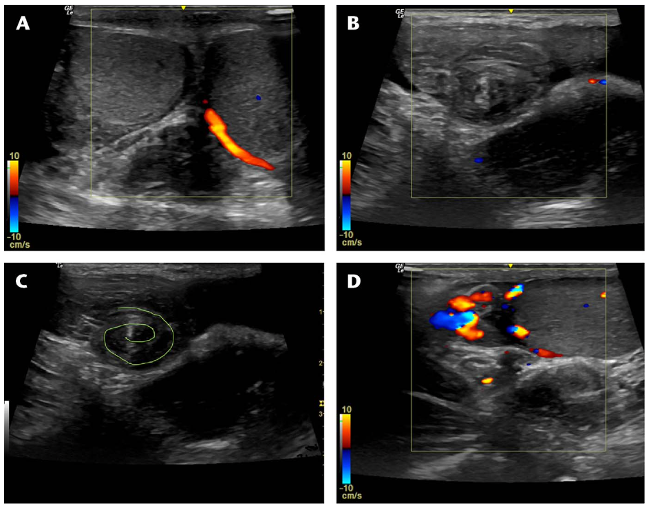Manual detorsion is a non-invasive procedure that emergency physicians can perform at the bedside to reverse the torsion and return blood flow to the testicle. The European Urological Association Pediatric Urology Guideline states that manual detorsion should be attempted in all cases of testicular torsion at the physician’s discretion and can be done without anesthesia. In testicular torsion, the testis is typically rotated inwards. Therefore, manual detorsion is typically performed by manually rotating the testicle outward, from medial to lateral. This results in reperfusion in about ⅓ of cases. There are multiple factors which influence success rates for manual detorsion including the degree of torsion and the direction of rotation (19). If you are trying to detort in the wrong direction or you do not rotate enough, vascular flow will not be restored.
PoCUS can be used to help identify direction of rotation of the torsion to help guide the counter-direction for manual detorsion (20). If you identify the whirlpool sign, you can determine the direction of rotation (Figure 14) (20,21). Ultrasound can also be used to assess for reperfusion of blood flow on color doppler and resolution of whirlpool sign. Additionally, the patient should have an abrupt improvement in pain with restoration of blood flow which can be confirmed by direct visualization on ultrasound.

Figure 14. Using the whirlpool sign (B,C) to identify direction of manual detorsion resulting in return of blood flow on color doppler (D) (20).
